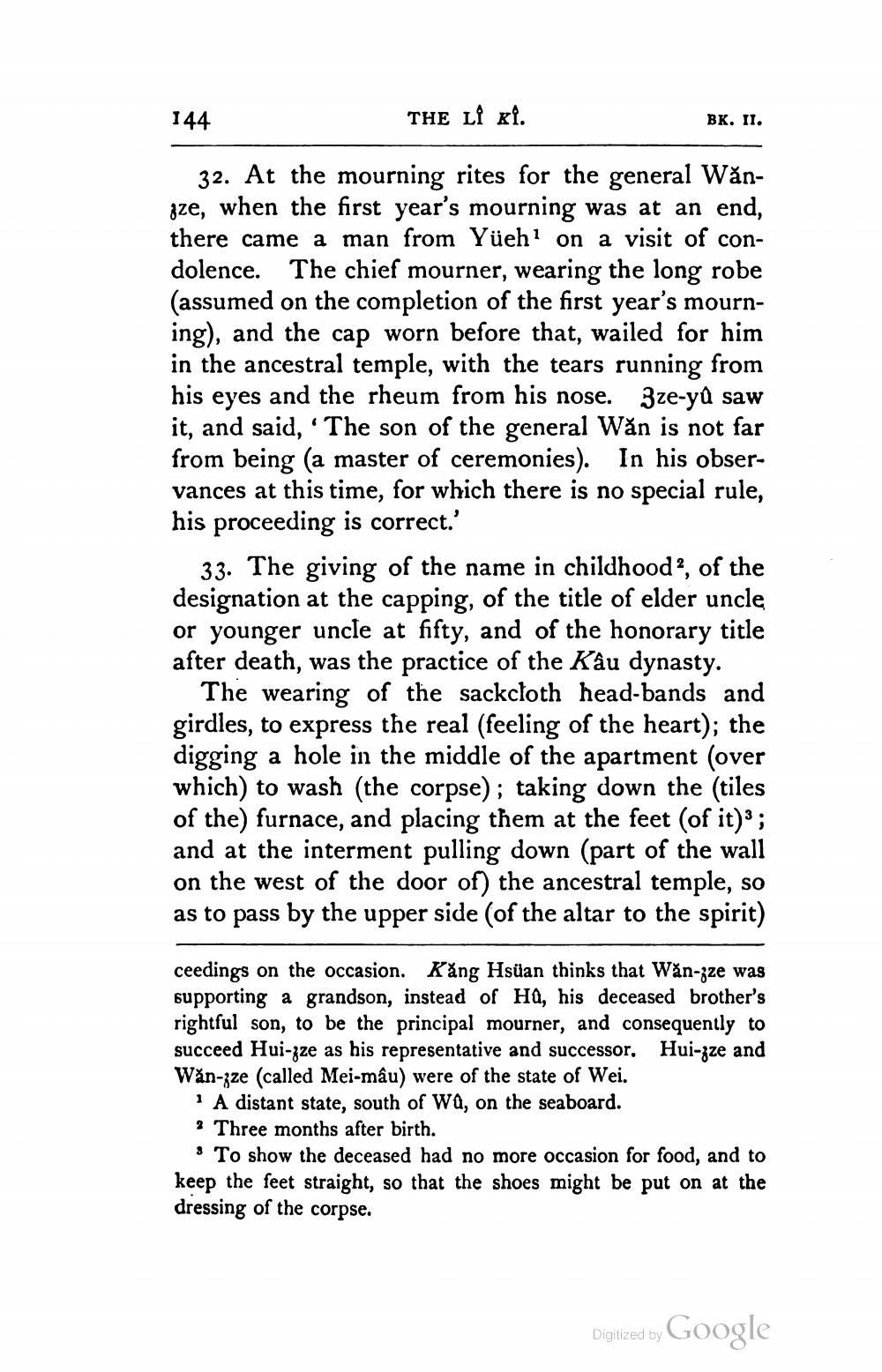________________
144
THE LI Kİ.
32. At the mourning rites for the general Wănaze, when the first year's mourning was at an end, there came a man from Yüeh1 on a visit of condolence. The chief mourner, wearing the long robe (assumed on the completion of the first year's mourning), and the cap worn before that, wailed for him in the ancestral temple, with the tears running from his eyes and the rheum from his nose. 3ze-yû saw it, and said, 'The son of the general Wăn is not far from being (a master of ceremonies). In his observances at this time, for which there is no special rule, his proceeding is correct.'
BK. II.
33. The giving of the name in childhood2, of the designation at the capping, of the title of elder uncle or younger uncle at fifty, and of the honorary title after death, was the practice of the Kâu dynasty.
The wearing of the sackcloth head-bands and girdles, to express the real (feeling of the heart); the digging a hole in the middle of the apartment (over which) to wash (the corpse); taking down the (tiles of the) furnace, and placing them at the feet (of it)3; and at the interment pulling down (part of the wall on the west of the door of) the ancestral temple, so as to pass by the upper side (of the altar to the spirit)
ceedings on the occasion. Kăng Hsüan thinks that Wăn-zze was supporting a grandson, instead of Hû, his deceased brother's rightful son, to be the principal mourner, and consequently to succeed Hui-zze as his representative and successor. Hui-zze and Wǎn-zze (called Mei-mâu) were of the state of Wei.
1 A distant state, south of Wû, on the seaboard.
2 Three months after birth.
To show the deceased had no more occasion for food, and to keep the feet straight, so that the shoes might be put on at the dressing of the corpse.
Digitized by
Google




